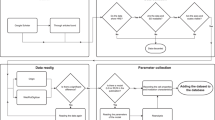Abstract
CHINESE hamster cells which survived 1,500 rads (a survival fraction of ≈2 × 10−3) were found to have several heritable altered biological properties. These included a slower cell population doubling time, a smaller cell size, an abnormal chromosome number and morphology, and an increased radio-sensitivity—namely a D0 value of ≈135 rads instead of the 205 rads for the unirradiated or control cell line. Furthermore, these characteristics persisted in a number of the sub-lines for many months of continuous culture1. That changes of this type should occur in cells of tissue irradiated in vivo is plausible, and if they do occur such alterations would have important implications for tumour radiobiology and for clinical radiotherapy. This report describes an initial experiment that was designed to test for such an effect.
Similar content being viewed by others
References
Sinclair, W. K., Radiat. Res., 21, 584 (1964).
Suit, H. D., Shalek, R. J., and Wette, R., Cell. Radiat. Biol., 514 (1964).
Nunnally, J., Worsnop, R., and Shalek, R. J., Cell. Radiat. Biol., 531 (1964).
Author information
Authors and Affiliations
Rights and permissions
About this article
Cite this article
SUIT, H. Response to X-irradiation of a Tumour recurring after a TCD95 Radiation Dose. Nature 211, 996–997 (1966). https://doi.org/10.1038/211996a0
Issue Date:
DOI: https://doi.org/10.1038/211996a0
- Springer Nature Limited





